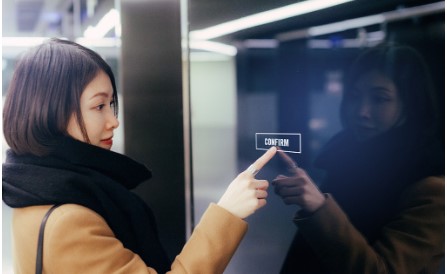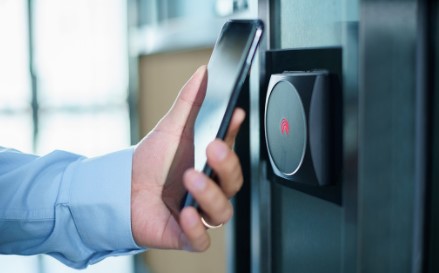
Technology plays a major role in our lives. In the recent years, many things have changed due to technology. It has helped human beings prosper in many ways. The growth of a business or an economy as a whole is considerable after the advancement in technology. It has made numerous things digital and easy to access. Many people are dependent on technological applications these days. It has a large impact on human life.
Technology has its influence on various industries. And one such industry is the elevator industry. Since 2017, the elevator industry has been busy growing and transforming itself. The elevator industry is gearing up to step up a notch. Elevators are said to be the most frequently used mode of transport for moving inside buildings in the world.
Innovations and Technological Advancements
A modern day elevator consists of a cab or car mounted on a platform within an enclosed space called a shaft or sometimes a ‘hoistway’. In the past, elevator drive mechanisms were powered by the steam and water hydraulic pistons or by hand. A vast transformation can be seen in the design, working, structure etc of the elevator now. Here are some of the technological advancement stories of the recent past:
Smart Elevators:
As skyscrapers continue to rise to dizzy heights, elevator manufacturers made adjustments in order to safely and quickly transport the passenger. Smart elevators are among the new wave of advancement. These elevators use smart technology to create more efficient ways in transporting passengers, especially during rush hours in the office buildings. They can also be programmed to work differently at different times of the day and according to the traveling habits of the passengers.

Internet of Things:
Internet connected elevators are the commonplace. These elevators work based on sensors. The sensor gathers data about usage and other factors, to analyze the wear and tear on the parts and machinery of the elevator. This information is retained in the cloud-based platform to predict when maintenance will be needed. This allows technicians to predict future problems and solve them before they become cumbersome. These devices are making maintenance easier, cheaper and less labour oriented.
Virtual Reality Diagnosis:
There are thousands of configurations and millions of parts in the elevators, which make a repair difficult to find. However, with augmented reality, technicians can dig into the problems on site or even before getting to the site. Mechanics can diagnose a problem without risking their lives by dangling from a lift shaft or climbing several floors. The technician simply have to put on the glasses and use hand motions to explore the machine and its parts in more depth. The view on the headset can be widened allowing the use to do virtual walk throughs to look for exact places that require repairs.

Awaited Advancements in the Industry
A leading company in the industry is working on a new technology which intends to make an elevator independent. The technology is trying to eliminate the use of cables in elevators, allowing it to travel vertically and horizontally through shaft loops within the building. Some elevators are also being designed to give real-time insights to building owners wherever they are. This could help them manage and operate the building more efficiently.
Another aspect being considered is to make elevators with a sleep mode. There are certain hours in a day where the elevator traffic is not much. During these timeframes some elevators could be put to sleep. This could save energy and reduce the electricity expenses of the building. Emergency elevators are awaited in the near future. Elevators are said to be avoided during any mishap. The occupants are in huge masses and it becomes difficult to evacuate. Such elevators unlock a stunning amount of potential safety improvements for buildings. The existing elevators could be upgraded with the new codes to fit the emergency evacuation system also.
There are major innovations and advancements happening in the industry. This has changed the overall face of the elevator industry. It has made vertical transport easy and smart in the past few years. It is an exciting time for the elevator industry. The next wave of emerging technological advancements in the industry will bring a substantial change to the elevator game. Every year is getting bigger and better. As the technology evolves, the elevators, their maintenance, their upgradation etc. will also evolve simultaneously.
Latest technology used in Elevators?
Elevation industry is making strong footholds in technological advancements and customer usability. Skyscrapers and high rise buildings are useless without elevators, but today the meaning of elevation has changed to a new high that brings about drastic innovation criteria to move customers to their destination in an organised way. Old technology of cabins powered by electric motors that use traction cables and counterweight systems or hydraulic fluid have changed symmetrically. Now due to the meteoric rise in elevator usage by over 2 billion people around the world, faster and different lifts are making inroads. Latest Elevators Technology is being used now gradually replacing woven steel cable to a form of carbon fibre that is more flexible, durable and has a longer life than metal cables. This technique is driving the lift-hoisting technology a bit further – and allows lifts to travel up to a km in a single run, double what a steel cable can offer. Due to heavy weight of metallic ropes accounting for huge weights to handle, usage of carbon fibre has reduced its weight input by 90% so it is much easier to use on light machines. Therefore, this innovation is quite beneficial. Meanwhile, some companies have also introduced cable less cars that run on magnetic propulsion and are faster by travel time. One is installed at the Taipei 101 building in Taiwan, where the lift travels at 37.7mph.

We also see solar energy usage today, thus a lift that is wholly based on solar power has become somewhat acceptable for saving high power consumption from elevator operation. Some companies around the world have also introduced rope-free system which takes architectural behaviour to new levels in their designs by concerns about elevator shaft height and vertical alignment. In cables less cars, manufacturers use a multi-level brake system with inductive power where smaller shafts are required than conventional elevators and save around 25% of a building’s usable space.
Reference
1. https://www.fieldboss.com
2. https://www.buildings.com
3. https://www.arcweb.com
4. https://www.fluxusventures.com
5. https://buildingandinteriors.com
